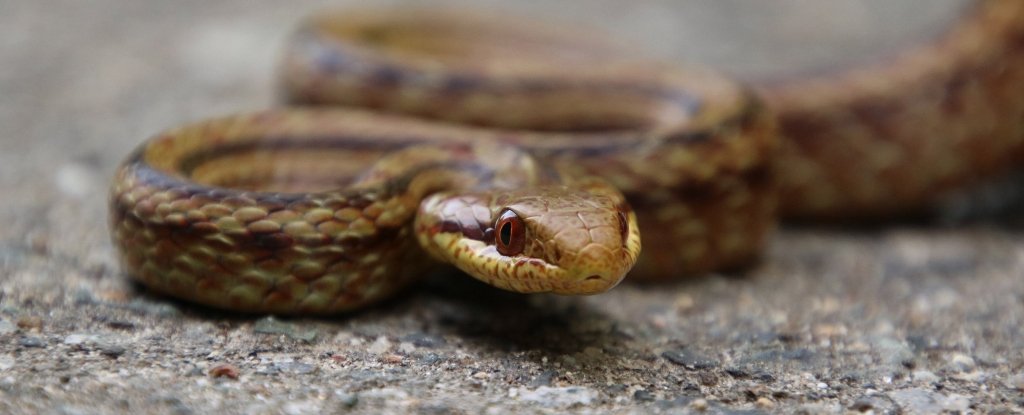Radioactive Snakes Could Help Scientists Track Fallout From The Fukushima Disaster - ScienceAlert

Snakes living in the Fukushima Exclusion Zone can be used to track radioactive contamination, scientists have learnt.
Ten years after one of the biggest anthropogenic radioactive disasters in history, a new study describes how the radionuclides accumulated by Japanese rat snakes (Elaphe climacophora and E. quadrivirgata) are uniquely positioned to help map varying levels of environmental radioactivity.
"Snakes are good indicators of environmental contamination because they spend a lot of time in and on soil," said ecologist James Beasley of the University of Georgia. "They have small home ranges and are major predators in most ecosystems, and they're often relatively long-lived species."
The snakes have a short range – travelling, on average, just 65 meters (213 feet) per day. A previous study by the team also found that radiocesium levels found in snakes at Fukushima closely correlated with radioactive contamination levels found in their environment. This means that tracking and studying the snakes should reveal environmental radioactivity levels.
Environmental contamination levels can vary based on the type of terrain and on landscape characteristics, such as ground cover. Not only does their homebody nature closely link snakes to an environment, their radiation exposure can help to better understand the effects of radiation on specific environments, and how that might affect other wildlife.
Led by ecologist Hannah Gerke of the University of Georgia, the team's research involved catching and GPS-tagging nine snakes with very high frequency (VHF) transmitters that could even reveal whether the snake was on the ground or in a tree.
The nine snakes were tracked for a month as they moved around their home environment in the Abukuma Highlands, around 24 kilometers (15 miles) northwest of the Fukushima Daiichi Nuclear Power Plant.
In all, the tracking showed 1,717 snake locations. By and large, the snakes spent their time in trees, grasslands, and next to roadside streams. They also spent time in deciduous forests and abandoned buildings, especially abandoned barns, and preferred to stay near roads - only one instance was recorded of a snake travelling more than 250 meters from a road.
The snakes tended, on the other hand, to avoid entering evergreen forests, remaining on the outskirts of such terrain.
"As expected, we found rat snake habitat selection differed slightly across spatial scales, but snakes consistently avoided evergreen broadleaf and evergreen conifer forests while selecting areas proximal to streams," the researchers wrote in their paper.
"Snakes often remained in the same retreat for multiple days, resulting in relatively small average movements and home ranges. Collectively, these data provide valuable insight into snake movement rates, behavior, and habitat selection within a contaminated landscape that will better inform future estimates of external radiation exposure and ultimately reduce uncertainties of dose-effect relationships for snakes in the Fukushima Exclusion Zone."
The tracking took place over the summer, between June and August, during which time snakes are most active. During winter, Japanese rat snakes hibernate, which could also influence their radiation exposure, particularly if they burrow underground, the researchers noted.
In addition, given the different environmental characteristics of the habitats chosen by the snakes - different land cover types, as well as the time spent up in trees - there could be considerable variety in radiation exposure, even within a group of snakes living in the same general area.
Future research, the team said, should seek to clarify the relationship between habitat use, radiation exposure, and levels of radionuclides found in snakes.
"Our results indicate that animal behavior has a large impact on radiation exposure and contaminant accumulation," Gerke said.
"Studying how specific animals use contaminated landscapes helps increase our understanding of the environmental impacts of huge nuclear accidents such as Fukushima and Chernobyl."
The research has been published in Ichthyology & Herpetology.
Comments
Post a Comment